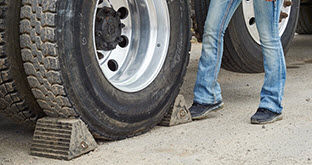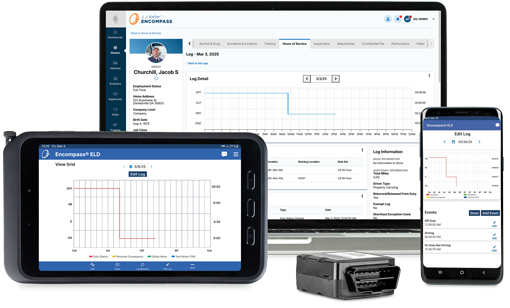Sr. Industry Business Advisor — J. J. Keller & Associates, Inc.
Preventing 30-Minute Rest Break Violations in an ELD World
The 30-minute break violation went from non-existent prior to July 2013 to the second most common HOS violation in 2016.
Published On: 07/14/2017


Written by:
Tom Bray
The 30-minute break violation went from non-existent prior to July of 2013 to the second most commonly written hours-of-service violation in 2016, behind only “form and manner.” The problems with the 30-minute break do not involve the actual rule but rather result from how drivers understand and follow the rule. Some drivers mistakenly believe that one of the 11 exceptions to the 30-minute rule applies to them when it does not. But that’s not the only problem.
Other 30-minute break problems that end in violations:
- Drivers not understanding the rule and believing they need to stop and take the break after 8 hours of driving, not when it has been 8 hours since the driver’s last break of 30 minutes or more (in other words, not accounting for on-duty time). Here is the actual rule: §395.3 Maximum driving time for property-carrying vehicles*** (a)(3)(ii) Rest breaks. Except for drivers who qualify for either of the short-haul exceptions in §395.1(e)(1) or (2), driving is not permitted if more than 8 hours have passed since the end of the driver’s last off-duty or sleeper-berth period of at least 30 minutes.
- Drivers losing track of where they are in their day and not stopping to take the break when it is required.
- Drivers not starting to look for a place to stop soon enough (waiting right to the limit to start looking for a place to stop).
- Drivers not understanding that there are days when two breaks are required. If the driver takes a break too early in the day and will be working a full 14-hour day, the driver may end up needing a second 30-minute break.
- Drivers using electronic logs resuming driving before the full 30 minutes have passed.
Another issue is drivers believing they cannot continue an on-duty, non-driving activity when the eight hours is reached. Not true. The driver just cannot drive when the limit is reached. If the driver works past the eight hours doing on duty, non-driving activities, the driver just needs to take the 30-minute break before driving.
However, some electronic log systems may alleviate the 30-minute break issue for drivers. Onscreen alerts when the 8-hour limit is approaching and countdown timers for the 30-minute break are helpful, if a driver is paying attention.
Training, Training, Training
The key to addressing these issues is driver training. Initial driver training (orientation), ongoing training, and the remedial training should include training on the 30-minute break requirements and any applicable exceptions. Here are suggested topics to address in each type of training:
Initial: A full and complete discussion of the rule including what the specific requirement is, any applicable exceptions (or an explanation that there are no exceptions that apply), locating a place to take the break in advance to avoid driving past the limit (preplanning the break during trip planning) or starting to look after the seventh hour if a location was not preplanned, making sure to take the entire 30 minutes as off-duty time, and of course, instruction on understanding the functions of your company’s electronic logging device and how it impacts their 30-minute break compliance.
Ongoing: Using the normal ongoing training and communication methods (safety meetings, newsletters, etc.) to remind drivers of the requirement and the applicable exceptions. It is also a good idea to “rotate” through the other initial topics.
Remedial: Any time a driver receives one of these violations, the driver should be counselled. The counselling should include determining why the driver violated the regulation (misunderstanding, poor planning, not stopping long enough, etc.), retraining the driver on the requirements and the applicability of the exceptions, and establishing future expectations (that this will not happen again).
If the training is effective and the drivers understand and obey the 30-minute break rule, it should be reflected in your violation rate (both during in-house auditing and during roadside inspections). If either in-house auditing or roadside inspections are showing this violation still occurring or increasing, that is an indication that you need to revisit your training on the 30-minute break requirements.
Manage Hours of Service Compliance with Encompass
Use the J. J. Keller® Encompass® Fleet Management System to simplify hours-of-service compliance. It tracks your drivers' hours of service for every log type – electronic, paper, exempt, and timecards – always according to DOT regulations. Learn more.
You may also enjoy the following articles:
Sign up for our newsletter!
We'll help you stay on top of regulations, best practices, and fleet industry news. Sign up to receive a monthly email notification with links to our most recent blog articles, free resources, and event invites.
